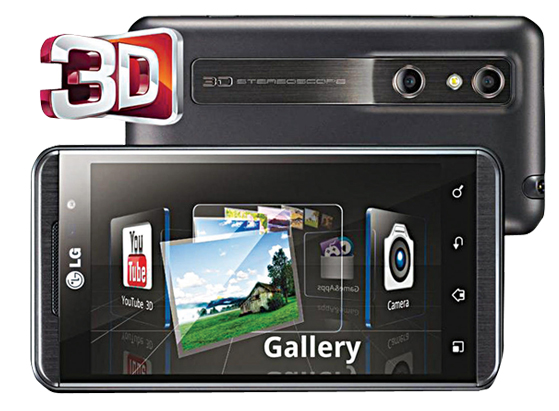3D conferencing. 3D videoconferencing allows seamless transmission of 3D media across the network, revolutionising traditional video conferencing through introduction of more reality using customised 3D technology.
The key advantage that 3D video conferencing brings against traditional voice over Internet protocol (VoIP) solution is superior visual aspect and vivid perception of facial and other body language, resulting in better involvement of users and enhanced overall communication. Best of all, this technology allows for eye contact.
3D processing hardware. High-end enthusiast laptops and consumer laptops that incorporate 3D capability have been available for the last one year. While mainstream laptops that incorporate 3D use the Nvidia GT 555M GPU, enthusiast devices such as the Alienware M17xR3 use higher-end cards like the Nvidia GTX 580M. In fact, most current GTX GPUs support 3D gaming.
A 120Hz monitor and a 3D Vision Kit combined with a compatible Nvidia graphics card transform the mundane 2D images on the PC into a realistic 3D experience. 3D Vision requires proper configuration before the user can really enjoy the effect. The technology degrades the performance in most games by 50 per cent. Also, the shutter glasses can be annoying to wear for a long time and block a lot of the display brightness. Nevertheless, Nvidia is still in the lead compared to AMD.
AMD uses a technology called ‘HD3D’ to enable stereoscopic 3D support in games, movies and/or photos. Additional hardware (such as 3D-enabled panels, 3D-enabled glasses/emitter and Blu-ray 3D drive) and/or software (such as Blu-ray 3D disks, 3D middleware and games) are required for enabling stereoscopic 3D.
The Radeon HD cards such as the AMD Radeon 5450 and the 6970 HD cards also support 3D gaming. Companies that use these cards are MSI, Lenovo and Hewlett Packard (HP). The HP Envy 17 3D is one of the most popular PCs to come with the Radeon 3D solution. Although AMD has a higher-end card called the Radeon DH 6990, AMD Crossfire Technology’s incompatibility with AMD’s Quad Buffer causes it to not support stereoscopic 3D gaming with frame-sequential displays using active shutter glasses.
Ultimately, most high-end GPUs can play 3D games, but as the overload is almost double the frame-per-second of the game, play performance will probably halve. Moreover, due to software incompatibility, certain performance boosting setups such as AMD Crossfire cannot be used. This puts a cap on the maximum gaming performance that can be derived from those cards.
Smartphones with 3D. Smartphones with 3D not only output movies and games in 3D using an autostereoscopic panel but they can also record and capture images in 3D. This kind of technology uses stereo image capture through two cameras placed a certain distance apart.
The different angles of the cameras with respect to the object being photographed let the smartphone create a 3D view. As always, processing images in 3D doubles the load on the system. Hence an SoC that can handle a 20MP standard image might be able to handle only a 12MP stereo image.
LG’s Optimus 3D utilises TI’s OMAP 4430. The OMAP 4430 is an ARM Cortex-A9 based dual-core SoC clocked at 1 GHz. It can handle 720p stereoscopic 3D video and capture 5MP stereo images.
An advancement over the OMAP 4430 is the OMAP 4460 featured in the Galaxy Nexus. The Galaxy Nexus is the current ‘Google Phone.’ The SoC that powers this device performs above the OMAP 4430 with a better full HD (1080p), 3D playback capability and also enough power to capture 12MP stereo images. This SoC (1.5GHz) is also clocked 500 MHz above the OMAP 4430 (1GHz). The Galaxy Nexus, however, does not feature stereo image sensors. Both the SoCs use PowerVRs SGX540 graphics core.

A smartphone that uses stereo image sensors to capture 3D images is the HTC Evo 3D. This device runs on Qualcomm’s first dual-core SoC—the MSM8660. Clocked at 1.5 GHz and featuring an Adreno 220 GPU, this SoC is similar to the MSM8260. The only difference is that the MSM8260 is enabled with HSPA+ wireless communication, while the MSM8660 supports multi-mode HSPA+/CDMA2000 1xEV-DO Rev.B. The Adreno 220 has a theoretically slower fill rate than the SGX540 but the real-life performance difference is not known.












